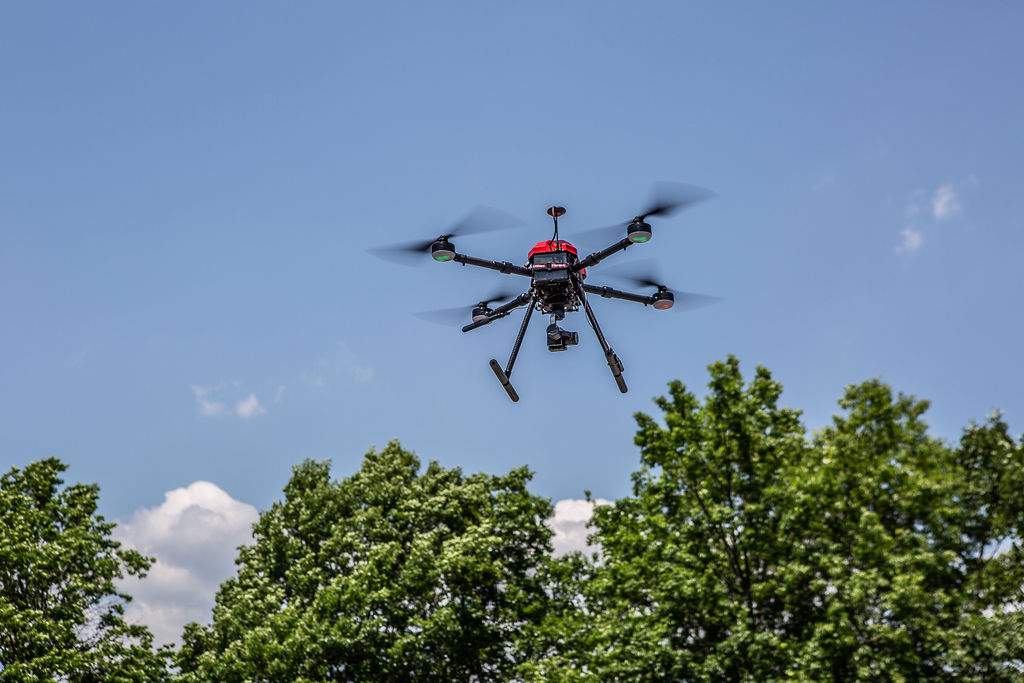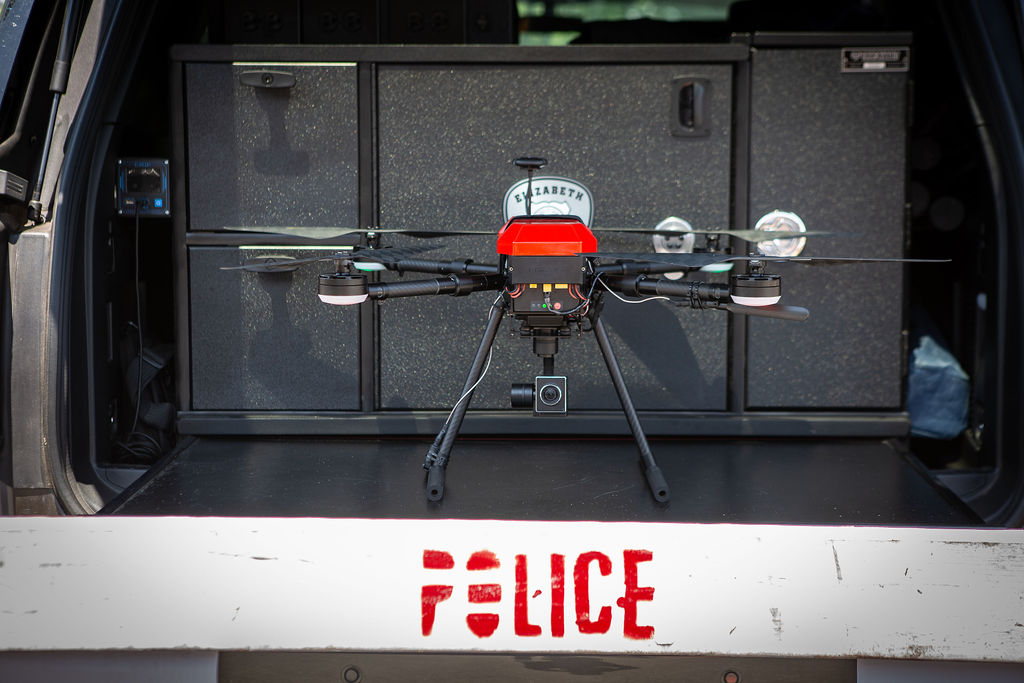New DFR possibilities explored with 55 minute battery life and LTE capability
Over the course of the last 10 weeks, Elizabeth Police Department has been conducting a Drone as a First Responder (DFR) program using our Paladin Knighthawk – an LTE based UAS with a 55 minute battery life. We are extremely excited to announce that they have now flown just over 1,000 beyond visual line of sight (BVLOS) missions without having visual observers on the roof in class B airspace, and operating only on a 4-day schedule for 40 hours each week. With the LTE capability, we were able to obtain a BVLOS waiver on behalf of EPD in class B airspace with all 0 grid squares turning into 200 foot areas in the area shown below. Their geofence (which helps RPIC’s fly within their FAA approved airspace) lies right on the border of Newark International Airport’s border.
The LTE capabilities of the UAS allows EPD’s DFR program to operate BVLOS without visual observers on the roof. The remote pilot in command (RPIC) is housed indoors and the UAS takes off from ground level outside the HQ without need for the remote controller to be pointing at the UAS. How is this technology possible and the operation allowed by the FAA? Paladin’s drones are LTE-based which means it relies on the connection to the cellular network enabling it to fly up to 3 miles away (limited by FAA regulations). EPD utilizes a network of visual observers made up of officers on patrol who can act as a VO at any given time. This eliminates the need to have a VO stationed on the roof which is a huge cost saver and logistically allows for DFR to be a true force multiplier.
“The 55 minute battery life allows for the PIC to jump from call to call without needing to return the UAS and swap the battery. This has yielded huge advantages for clearing calls from the CAD queue and responding to priority one calls as needed. EPD’s 1000 flight milestone in such a short time changes the concept of LTE-based DFR from a great idea in theory to a proven reality and we are reaffirming those benefits with other departments across the country everyday.” – Tyler Roberts, Paladin Growth Lead
Interested in learning more? Book a demo and remotely pilot a UAS right from your desk.

About Paladin:
The Knighthawk is a drone purposely designed to get to an emergency as fast as possible, stay on scene for as long as possible, and return home to get ready for the next call – all without pilot intervention. Knighthawk comes equipped with LTE communication technology that allows us to introduce True Unlimited Range. No matter how far you send the drone, you won’t lose video or control of the drone, even in dense, urban environments as long as there is a cellular network. This functionality also helps us send Knighthawk beyond visual line of sight (BVLOS) with complete confidence. It also comes equipped with a 10x zoom and thermal camera, is weather-resistant, and has over 55 minutes of flight time (with the payload, not without).
Watchtower is our all-in-one application that allows any first responder to deploy the Knighthawk with a single tap, see its live video feed from anywhere, manage flight, video, and equipment records, and even notify users if any part of the drone needs servicing. All of this happens in the background and automatically – when a 911 call comes in, Watchtower dispatches Knighthawk to the emergency, notifies the department about the status of the drone, and sends its video feed to everyone and anyone who needs it. When the mission is done, Watchtower automatically uploads the mission logs, video footage, and flight information for the department to review and download at any time.
We’re proud to be working with departments across the country that are pushing towards the future of first response. Through Paladin, they’re able to get a live overhead view of an emergency before they arrive. Now, instead of relying on little to no information, they’re able to view the emergency exactly as it’s happening, and start planning before they arrive.
We’ve already responded to over 2000 emergencies across multiple states, and are excited to be onboarding new cities every week. Every day, our system is being used to keep people safe, de-escalate situations, and empower first responders with the exact information they need, when they need it.

